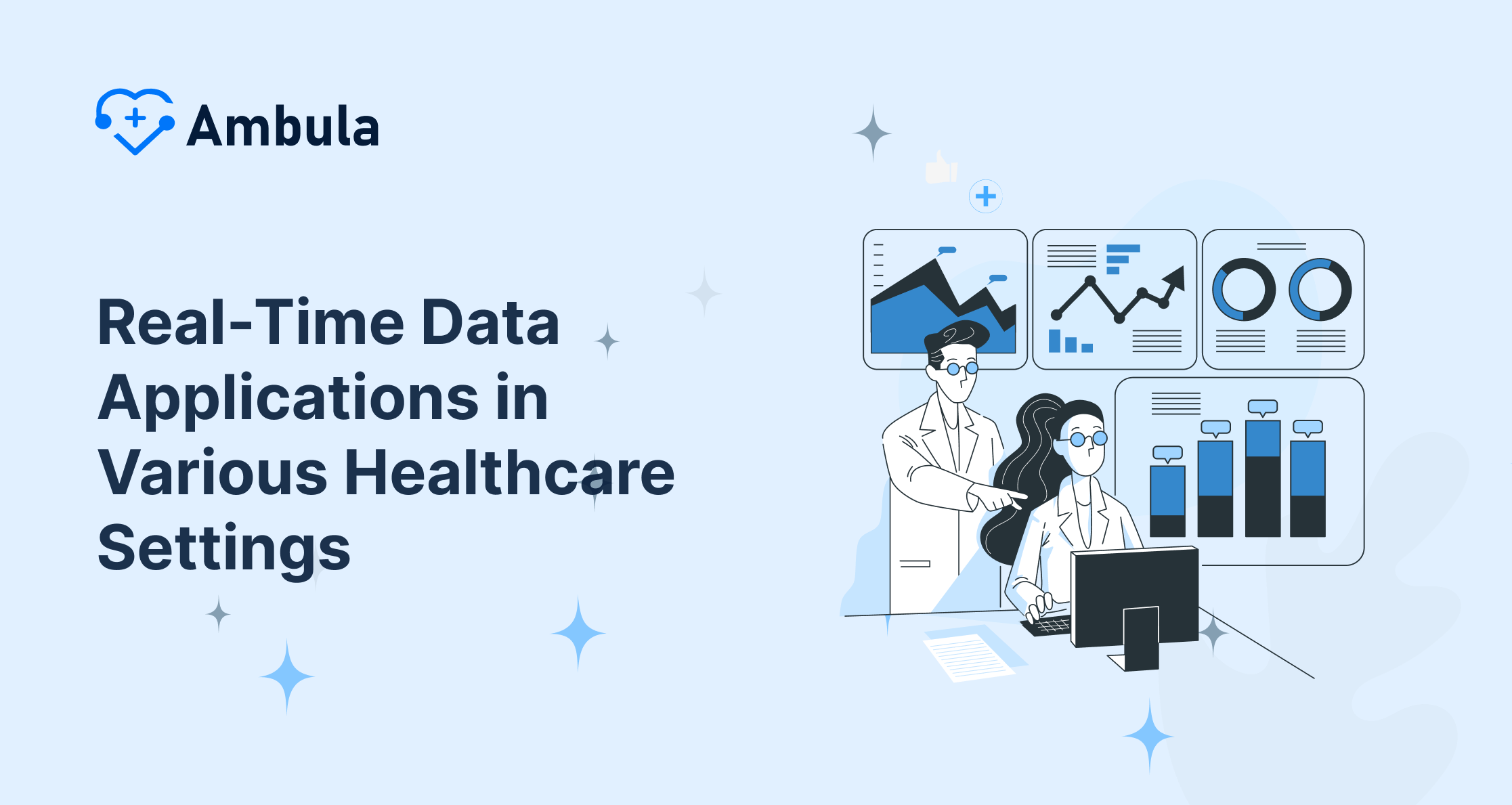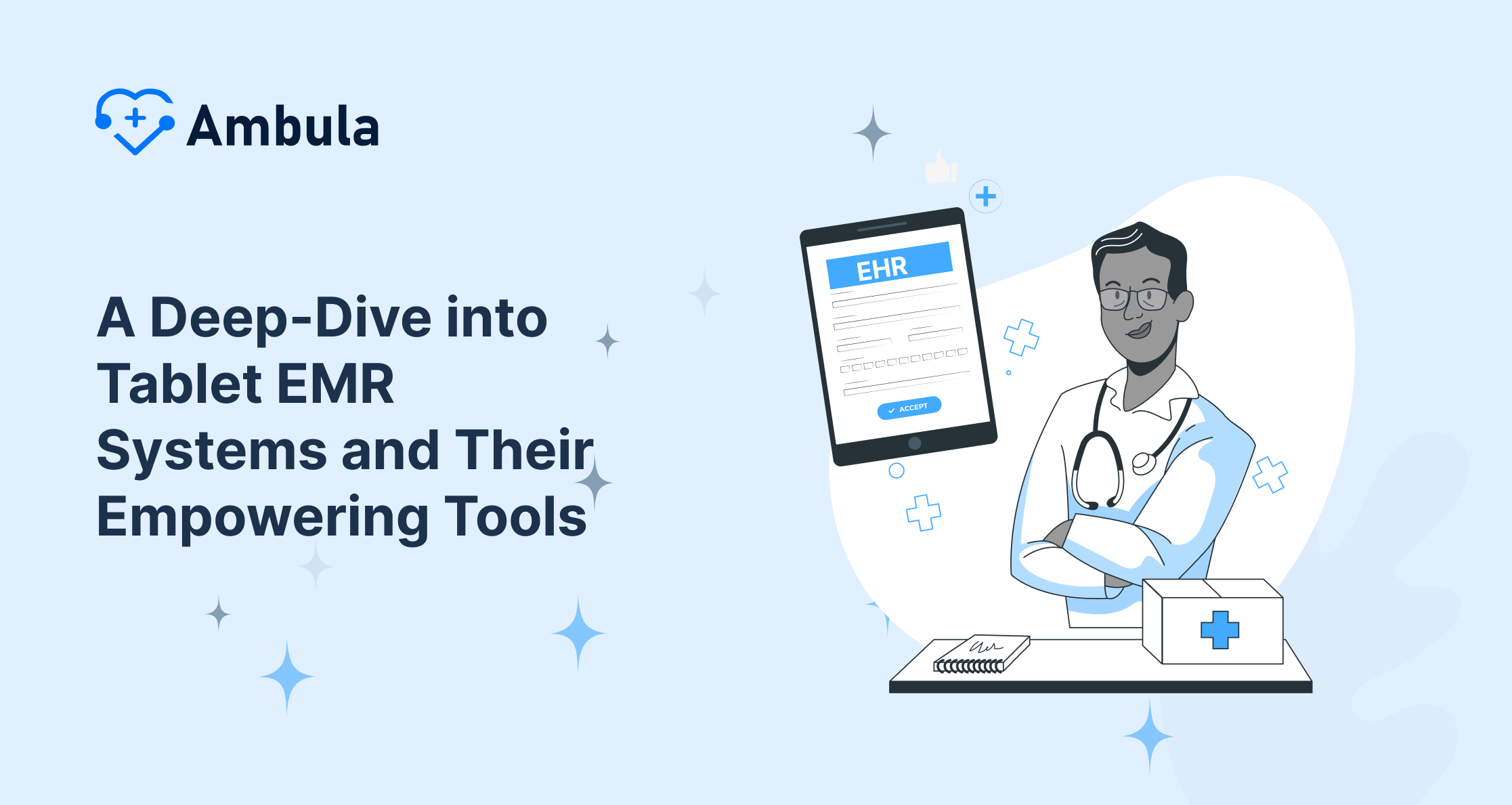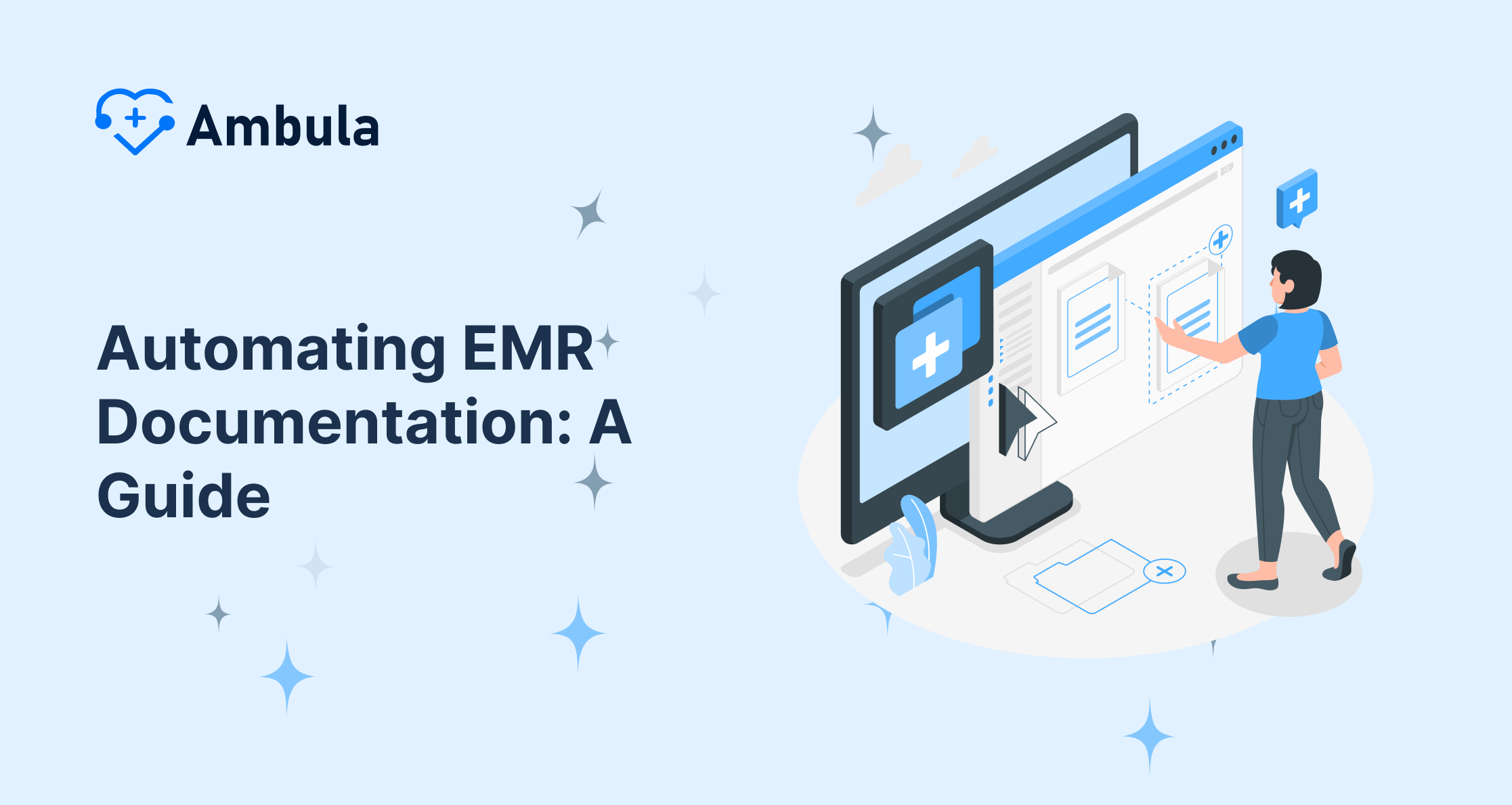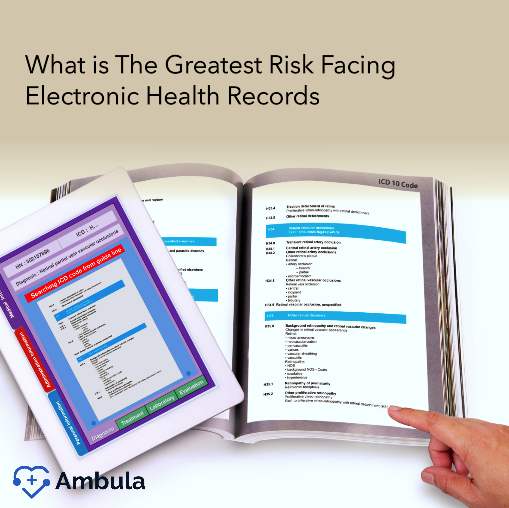Topics:
- How real-time data can improve patient care
- The importance of real-time data collection
- Real-Time Data Applications in Various Healthcare Settings
- Issues with comprehensive interoperability
- What happens without real-time data?
- How to achieve real-time data
- Challenges and Considerations in Implementing Real-Time Data Systems
How real-time data can improve patient care is linked to the registration of medical data in real-time. Undeniably, this includes actions that the patient is submitted to, observations, assessments, etc. Ultimately, this data is recorded in the Electronic Health Record (EHR system). Accordingly, EHR is vital today in healthcare management and experience. Real-time data gives healthcare facilities a holistic view of the patient’s condition. Using this information, hospitals and other practices can offer proactive care, thus boosting health outcomes and diminishing readmissions. Also, it enhances all-around performance and operational efficiency through advanced analytics in healthcare.
The importance of real-time data collection
Real-time data collection is gathering and analyzing information as it happens. This data can come from various sources, including medical devices, electronic health records (EHRs), and patient wearable devices. Real-time data collection is important for several reasons:
It allows for early detection of changes in a patient’s condition. This can be crucial for preventing adverse events and improving patient outcomes.
It can help to improve the efficiency of care delivery. By providing real-time information to caregivers, real-time data can help to reduce errors and delays in treatment.
It can empower patients to take a more active role in their care. By providing patients with real-time patient data access to their own health data, real-time data can help them to make informed decisions about their treatment.
How Real-Time Data Can Improve Patient Care
There are many ways in which real-time data can be used to improve patient care. Here are a few examples:
Early detection of sepsis: Sepsis is a life-threatening condition that can develop rapidly. Real-time data can be used to monitor patients for signs of sepsis, such as changes in heart rate, blood pressure, and respiratory rate. This can help to identify patients at risk of sepsis early on, so that they can receive prompt treatment at the point of care.
Improved medication management: Real-time data can be used to monitor patients’ medication adherence and identify potential drug interactions. This patient data processing can help to prevent medication errors and improve patient outcomes.
Reduced hospital readmissions: Real-time data can be used to monitor patients who have been discharged from the hospital to identify those who are at risk of readmission. This can help to prevent readmissions by providing patients with the support they need to stay healthy at home through care coordination.
Benefits of Real-Time Data
How can real-time data improve patient care? Let’s discover first the benefits of real-time data:
The centralization of data helps make big and small decisions. Typically, clinical data is not centralized, limiting efficiency and quality improvement. With real-time data, analysis is easy and leads to more efficient actions. Consequently, shifting from a volume-based industry to a value-based healthcare one is easier now than ever. Additionally, identifying risk and quality gaps improves financial and clinical performance through real-time healthcare analytics.
Revolutionizing real-time analytics: Artificial intelligence, real-time patient scheduling, and virtual visits bring the real-time health system to a new level. Surprisingly, the times of bracelets, devices, and necklaces used for aesthetics no longer exist. Each device is now intelligent and can save lives.
More benefits
Synergy achievement between patient and doctor: Patients with these advanced improvements engage more with their treatment processes. They can take their health into their own hands. Real-time data visualization can help improve patient care by engaging patients through access to their vital signs. When seen in front of their eyes, patients become aware of these indicators, become motivated to follow treatment and remain alert.
Better responses in time: Speed is major when it comes to healthcare. One second can be the difference between life and death. This is where improving patient safety and quality of care is at its best due to real-time data sharing.
Real-Time Data Applications in Various Healthcare Settings
The advent of real-time data has revolutionized healthcare delivery across diverse settings, enabling unprecedented levels of patient monitoring, intervention, and collaboration. In intensive care units (ICUs), real-time vital signs monitoring facilitates the early detection of complications and timely interventions, thereby improving patient outcomes for critically ill patients. In emergency departments (EDs), real-time data plays a pivotal role in triage and prioritization. By analyzing real-time data from vital signs, medical records, and other sources, ED staff can swiftly identify and prioritize patients based on the severity of their condition, ensuring that those in most urgent need receive immediate attention at the point of care. This real-time assessment effectively reduces wait times and optimizes patient flow in overcrowded EDs. Real-time data has also transformed ambulatory care, particularly for patients with chronic conditions. Utilizing wearable devices and sensors, remote patient monitoring enables healthcare providers to track vital signs, medication adherence, and other health parameters remotely. This real-time data empowers proactive interventions before complications arise, improving disease management and reducing hospitalizations. Telemedicine, delivering healthcare services remotely through telecommunications technology, has benefited from real-time data integration. Real-time data sharing between healthcare providers across different locations facilitates virtual consultations, remote monitoring, and collaborative clinical decision-making, enhancing access to care and overcoming geographical barriers. Real-time healthcare analytics has also revolutionized clinical trials. Real-time data from patient monitoring devices and electronic health records provide immediate healthcare data insights into treatment efficacy and safety, enabling a faster evaluation of new drugs and therapies. This real-time feedback loop expedites the development of effective treatments and improves patient outcomes.
Issues with comprehensive interoperability
The issues with comprehensive interoperability emanate from different platforms, vendors, and user types. All of this constructs obstacles to Real-time data in patient care. How real-time data can improve patient care is jeopardized, therefore. Today, the challenges that real-time data face include:
- Dissimilarities in technology adoption among care settings: many post-acute settings and clinics can’t collect or send information in standard formats.
- Shifting unclear timetables and regulatory requirements
- Health plans are unable to share claims data or don’t share it
- Uneven standards for patient privacy among types and states of data
- Inapplicable or inappropriate clinical content for unique patients in some of the products provided by vendors
- The exclusion of behavioral health providers from the provisions of the HITECH act
What happens without real-time data?
Without real-time data, your practice will go back to the dark ages. Here’s what it would be like without real-time data in patient care:
Crowded waiting room: The increased inefficiencies you will face without real-time data are a waste of time. First, the patient will not be known unless they enter the door. Secondly, you will have to monitor the patient consistently for health changes. Sadly, you will lose virtual care performance.
Old payment methods: In the new era of real-time data and mobile health, reimbursement will move from payment passed on to an episode of care. New models that tie payment to health outcomes will emerge, bundling the whole care in one payment.
Data decentralization: We previously discussed the importance of centralizing data in terms of efficiency and time management. Without real-time data, this will be lost.
How to achieve real-time data
Learning how to achieve real-time data and some strategies to improve patient safety are key to patient-centered care. By definition, it is linked to health outcomes and patient experience in Real-time data inpatient care. What are the initiatives to be considered when patient safety programs are prioritized?
- Allowing patients to access EHR data and doctor’s notes
- Caring for the hospital’s environment
- Creating a safe patient experience
- Creating a timely and straightforward appointment scheduling
- Encouraging the engagement of caregivers and family
Check out these articles after you’re done
- What’s the importance of EHR
- The biggest challenges in healthcare technology
- How medical billing software can improve revenue cycle management

Challenges and Considerations in Implementing Real-Time Data Systems
One of the primary challenges lies in integrating and interoperability data from disparate sources. Healthcare organizations often struggle to seamlessly integrate data from electronic health records, monitoring devices, and other systems, leading to data silos and fragmented patient information. This fragmentation hinders the comprehensive analysis and real-time insights that real-time data systems aim to provide.
Data security and privacy concerns are paramount in healthcare, as real-time data systems handle sensitive patient information. Robust cybersecurity measures must be implemented to protect against data breaches, unauthorized access, and potential misuse of patient data. Healthcare organizations must establish clear data governance policies and educate staff on data handling practices to ensure patient privacy and compliance with data protection regulations.
Algorithmic bias poses another significant challenge in real-time data systems. Algorithms that analyze and interpret real-time data may contain inherent biases based on historical data or programming choices, leading to unfair or discriminatory decision-making. Healthcare providers must carefully select and validate algorithms, ensuring that they are unbiased and do not perpetuate existing disparities in healthcare.
The adoption of new technologies and the training of healthcare providers require careful consideration. Real-time data systems often require new software, hardware, and data management skills among healthcare staff. Comprehensive training programs and ongoing support are essential to ensure that providers can effectively utilize these systems and interpret real-time data for patient care.
Lastly, Real-time data in patient care is a hot topic. Thanks to real-time data support, the patient is more of a member of the healthcare system. Honestly, real-time data in patient care reduces wasted time and encourages the fulfillment of patient needs. It is the pillar of modern medical practices.
To get more updated information about modern healthcare, do not hesitate to call the Ambula healthcare team: (818) 308-4108!! And now check out how much is an EMR system for ASCs?






